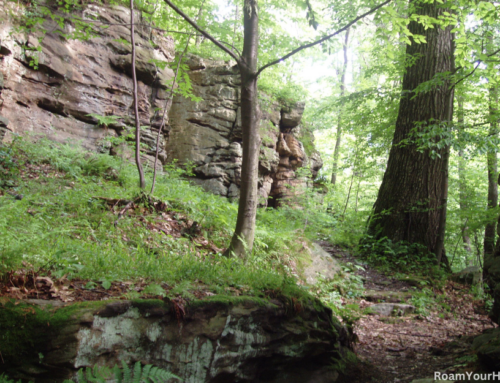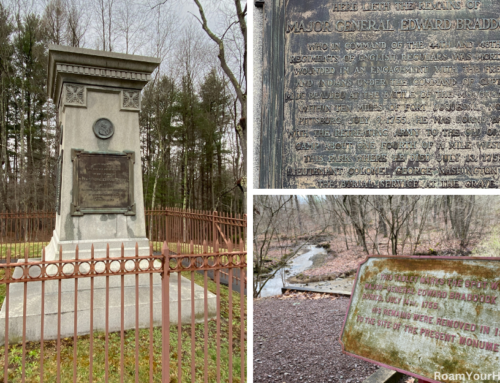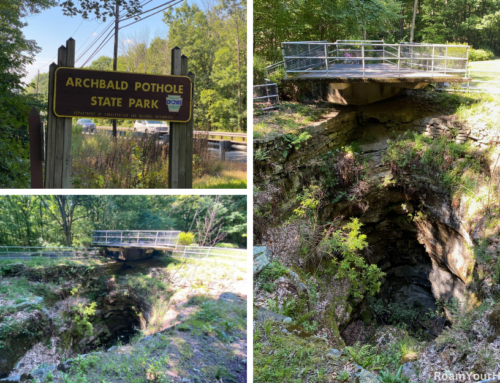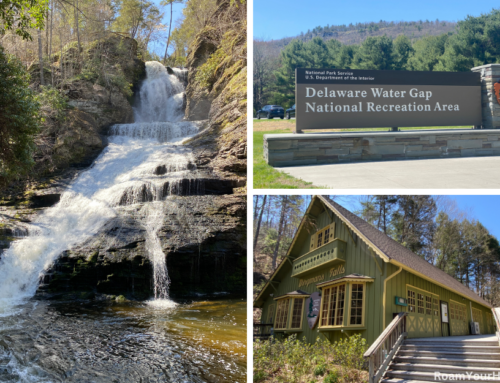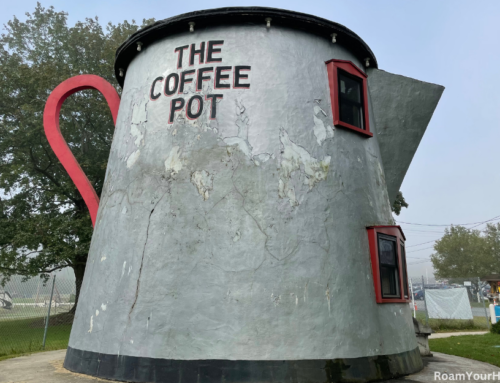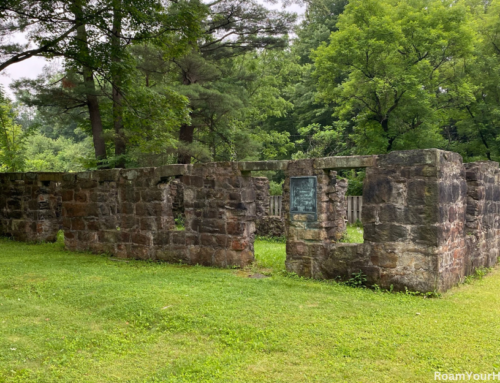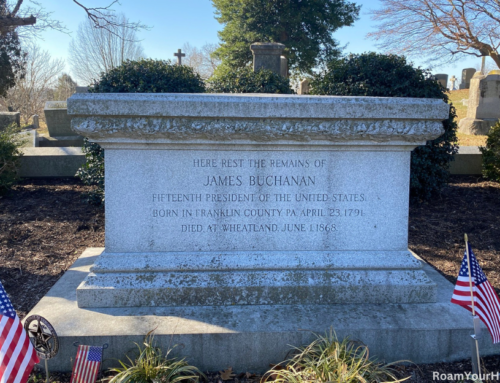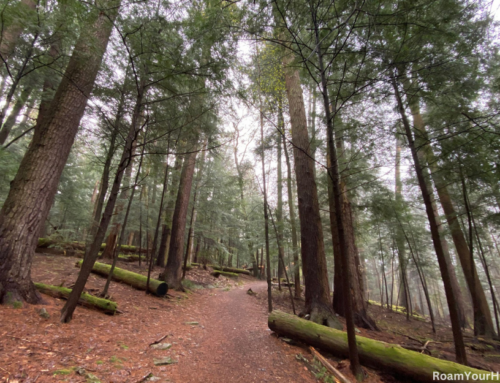
Fort Necessity: A Brief History and Visitor’s Guide
Fort Necessity National Battlefield is located just outside of the small town of Farmington in the rolling hills of southwestern Pennsylvania. The park offers a fascinating glimpse into the early struggles of the French and Indian War and is the location of the first significant engagement of 22-year-old George Washington’s military career. It was a pivotal moment for Washington and set the stage for the more substantial conflict between Britain and France in North America.
We have visited the site several times, but our favorite time to visit is during the summer when it looks much like it did when Washington was there. The park is spread over several sites, but nearly everyone starts at the Visitor Center.
Their VC is very well put together. There are exhibits and a short film explaining the battle, its significance, and young Washington’s role in shaping the future of America. The center also explores the history of the National Road, the country’s first federally funded highway, which passes through the battlefield. An incredible array of interpretive displays go into detail about the site.
Visiting Fort Necessity National Battlefield
The main portion of the park is located near the Visitor Center. It preserves the site of the Battle of the Great Meadows, which took place July 3rd, 1754. The skirmish was between British colonial forces led by Washington and a French force allied with Native American warriors. In a hurriedly built stockade, Washington’s troops made their last stand before surrendering to the French—a rare instance in which Washington was forced to admit defeat.
After leaving the visitor center, there is a short path that leads through the Great Meadow; it was here in 1754 that Washington, fearing an attack from the French, ordered the construction of “a fort of necessity.” Five weeks later, on July 3, 1754, the French attacked. After fighting all day in the heavy rain, Washington had heavy casualties and saw no path to victory, so he decided to surrender. The following day, the French burned the fort to the ground. The Battle at Fort Necessity would start the French and Indian War.
Visiting today, you see much the same views as Washington did. Archaeologists have proven that today’s reconstructed fort and earthworks are the same size and location as Washington’s Fort Necessity. The surrounding Great Meadow is believed to look much the same as well.
The fort is undoubtedly the highlight for most visitors, including us. But there are also several other awesome things to do while visiting.
On our last visit, we sat for a few live ranger interpretive events, including a musket demonstration, which was very cool!
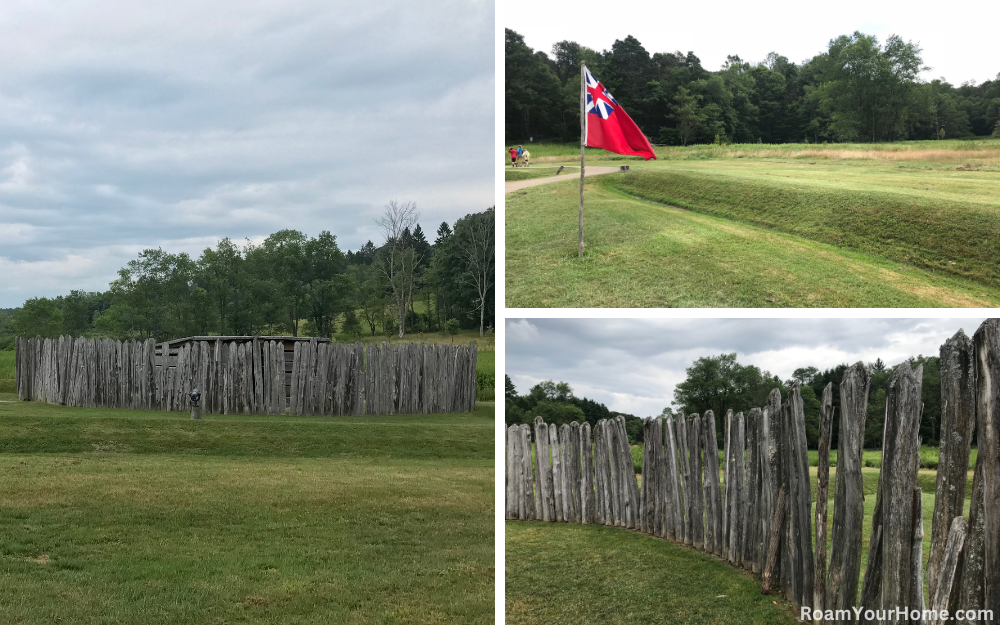
Experience Living History Programs
During the summer months, reenactments, ranger-led talks, and musket demonstrations bring the history of Fort Necessity to life. These events offer visitors a chance to see colonial-era military tactics and hear stories about the soldiers who fought here. We have attended several of these during our visits and have loved it each time. I can’t recommend it enough. The musket demonstrations are entertaining!
Hike the Battlefield Trails
For those who love nature and history, several hiking trails take a closer look at the landscape where the battle occurred. Interpretive signs along the trails offer more profound insight into the strategies used by both sides during the encounter.
A portion of the hiking trails follow the Braddock Road Trace. This is the remnant of the road built by Washington in 1754 and improved by General Braddock’s army on their way to Fort Duquesne the following year.
This road was a major transportation route from the east before the completion of the National Road to Wheeling, Virginia, in 1818.

Visit the Mount Washington Tavern
A short drive from the fort, the Historic Mount Washington tavern was once a popular stop along the National Road in the early 1800s. The restored building now serves as a museum, offering a glimpse into early American travel and commerce. A self-guided tour is offered. It takes you through the furnished rooms and interpretive signs telling the story of the historic tavern.
Braddock Grave
A monument marks the final resting place of British General Edward Braddock at the Braddock Grave Unit. Outdoor exhibits explain the ill-fated Braddock Campaign of 1755. A trace of the Braddock Road is visible at this site.
Jumonville Glen
A skirmish at Jumonville Glen on May 28, 1754, between George Washington’s lead British soldiers and the French would ultimately lead to the surrender at Fort Necessity. Jumonville Glen is a short drive from the visitor center and is worth checking out. The spring fight lasted only about 15 minutes and would change the course of history. It’s considered the first shots fired in the French and Indian War. There is a short hike that leads to the site of the battle.
Plan Your Visit to Fort Necessity
Location: Fort Necessity National Battlefield is along U.S. Route 40 (National Road) near Farmington, Pennsylvania. It’s about an hour and a half drive to Pittsburgh.
Hours: The park is open year-round, though some things have seasonal hours.
Admission: Entry is free.
How long does it take to visit Fort Necessity? If you want to see the fort and bolt, you can spend as little as a half-hour there. However, if you plan on exploring the area and learning, I plan to spend at least 2 hours or half a day.
Why Visit Fort Necessity?
Fort Necessity has something for everyone. The site tells the story of a young George Washington and highlights the broader struggle for control of North America—a conflict that shaped the course of history.

